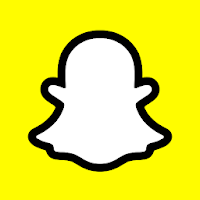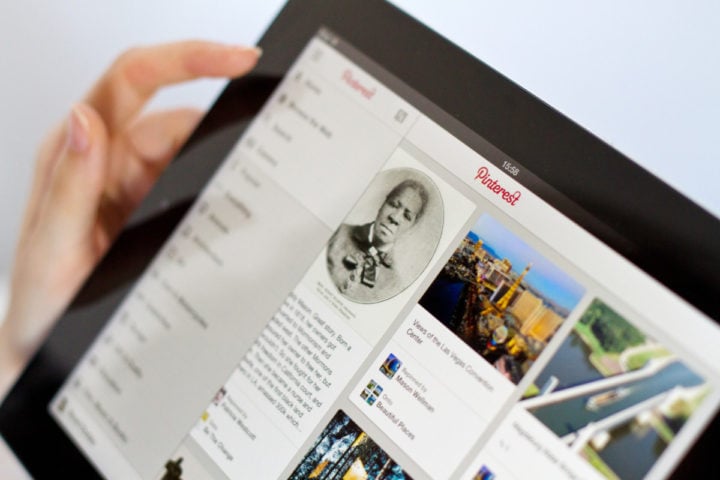Social networks – they are so rooted in our lives that most of humanity can no longer imagine life without these platforms of influence.
Below we will talk about the development of social networks from 1997 to the TikTok platform.
1997 – Six Degrees usher in the era of social media
Six Degrees, with its ability to create a personal profile and list of friends, is considered the first social network. The name goes back to the theory of six degrees of separation, according to which any person is connected with every other person by six handshakes. Based on this theory, Six Degrees offers a messaging system that allows users to communicate with each other up to the third level of awareness. There is also a system of forums for discussion and exchange of opinions.
Six Degrees was founded in 1997 by American Andrew Weinreich. At best, the network has more than a million users, but never becomes a profitable project. In 2000, Youthstream Media Networks bought the service. Finally, in 2001, the Six Degrees project was completed. A revival attempt took place in 2010, when registered users were encouraged to return.
2001 – Launching Jappy
In mid-2001, similar projects appear in Europe. At that time, still under the name singletreffen.net – how could it be otherwise with such a name – a network for dating the founders Matthias Vogl and Christian Wimmer started.
Three years later the name was changed to Jappy. The network has a mail system, chat, guest books and groups. Registered members can also activate the dating feature and send emoticons and virtual gifts to other members using virtual currency. In 2008, Jappy has more than a million members, since 2011 the network has been weakening greatly.
2002 – Friendster Goes Online
The Friendster project, which is especially popular in English-speaking and Asian countries, went online in 2002 and within a few months had three million members. The platform allows you to maintain contacts and exchange online and media content with them.
Myspace surpassed Friendster in 2004 and the social network soon lost its importance. The network came to public attention again in 2006 when it received a patent for calculating and displaying friendships on social networks. In 2009, Friendster was acquired by the Malaysian company MOL Global and transformed into a social gaming platform.
2003 – Myspace
For many, Myspace is the place where the first social networking experiences were made. What’s special about the web is its close connection to music. Artists and groups create profiles and offer their fans the opportunity to keep in touch. This solution attracts numerous users: Myspace can register up to 230,000 new members per day. In 2006, Myspace surpasses 100 million users. But in 2008, the project overtook the strongest competitor, Facebook, and the decline of the former leader began. While Myspace was still the 16th most visited site on Alexa in 2006, it is no longer in the top 50 in 2022.

In the same year, Linkedin and Xing are launched as professional networking platforms. Like a social network for private use, the two platforms offer the opportunity to create a profile, connect and share content. Companies can also submit their own business pages. Thus, Linkedin and Xing are not only professional contact networks, but also suitable for recruiting employees or orders or B2B lead generation.
Both platforms were able to gain a foothold on the Internet. Linkedin is English-speaking and primarily international in focus. In April 2022, 188 million users were from the US, according to Statista, the largest group of users. In the first quarter of 2022, Xing had 20.1 million users in the German-speaking region, a steady increase since 2013.
2004 — Here comes Facebook (and Orkut)
So Facebook. The most popular social network for many years was created in 2004 as a kind of virtual version of Harvard’s printed yearbooks and initially extended to elite American universities. In just a few years, Facebook has become the epitome of social networking.

Few people remember Orkut today. The social network from Google also saw the light in 2004. The platform is the result of a Google initiative that allows employees to use a fifth of their work time for their own projects. Developer Orkut Buyukkokten creates a project named after him, which becomes popular mainly in Brazil and India. Orkut cannot establish itself worldwide, so in 2014 its support was discontinued.
2005 – Localists and StudiVZ expand the social media market
In May 2005, the online community Lokalisten was launched in Germany. The network is particularly popular in the metropolitan areas of Munich, Stuttgart and Augsburg, as well as in major cities such as Berlin, Cologne and Frankfurt am Main. Users can create profiles with personal information other than name and age, such as favorite books, dialect, or dance style. Users can decide for themselves what information only friends see, and what information the entire network sees. As of July 2010, Localists had about 3.6 million members, but activity soon declined markedly. From the once 40 million page views per month in 2014, only 1.7 million remained. In September 2016, the network will be permanently closed.
Also in 2005, StudiVZ was founded as an online community for students. Both visually and in content, the project is very similar to Facebook’s great role model, which led first to a lawsuit and then to an out-of-court settlement. Due to its high popularity among non-students – StudiVZ had 17 million users at its peak – offshoots SchlerVZ (2007) and MeinVZ (2008) were launched.

However, the networks cannot stand up to Facebook in the long run. SchlerVZ went offline in 2013, MeinVZ, connected to StudiVZ via an interface, “lived” a little longer. Both together had only one million active users in 2015. In 2016, the platform will be sold for the third time. In September 2017, the operators finally filed for bankruptcy. At the end of March 2022, StudiVZ closed permanently.
And 2005 – Reddit and Youtube
Reddit is also known as a social media aggregator and offers a platform for users to share, rate and comment on texts and links. Just a year after its founding, Reddit reaches 500,000 page views per day and was bought by Cond Nast for $20 million. From 2008 to September 2017, Reddit was an open source project.

The YouTube video portal also launched in 2005. The platform has been owned by Google since 2006. In January 2021, 2.29 billion users watch videos on the platform every month. There was even a separate “profession”: YouTubers make money on their videos.

2006 – Twitter and Werkentwen
Short messaging service Twitter entered the social media market in 2006 and has been a success. While there were only about 400,000 tweets per quarter in the first year, more than 500 million tweets per day will be sent in 2020, according to Brandwatch. Both individuals and companies, organizations and the media use Twitter as a social network and discussion platform. After years of limiting the maximum tweet length to 140 characters, Twitter raised the limit to 280 characters in early November 2017. At the moment, Twitter is buying the richest man on the planet, Elon Musk.

Also in 2006, Werkentwen goes online. The network lasted only eight years. The student project of Fabian Jaeger and Patrick Olera did well in the beginning. By the end of 2007, the network already had a million members. After the takeover of RTL Interactive and the departure of the founders from management, the use of the platform has noticeably decreased. Of the 163 million page views per month in August 2010, three years later, only 23 million remained.
2007 – Tumblr bets on microblogging
The blogging platform Tumblr offers users the ability to share texts, images, video and audio files, links or chat logs with others. Other users can mark them as favorites, comment and repost.

The centerpiece is the user’s dashboard, which displays posts from the blogs they subscribe to. In May 2013, Yahoo bought the blogging platform. Nearly a decade later, in May 2022, there are an estimated 549 million blogs on Tumblr.
2010 – Instagram and Pinterest rely on visual content
In March 2010, Pinterest made the well-established message boards not only digital but also social with an open beta. Users can collect interesting image content and categorize it into different boards. You can also follow the pinboards of other users. Initially, Pinterest grew slowly. A few months after the launch, only a few thousand members remained. This may be due, among other things, to the fact that prior to August 2012, joining the network required a membership request or invitation.

Around the same time, the Pinterest app for Android was released. Companies were soon able to create business profiles. By February 2013, the number of users worldwide will exceed 48 million people. Since at least the start of monetization through Promoted Pins in 2014, Pinterest has become an important social media marketing tool.

Instagram also relies on visual content. The app is based on the Burbn registration software developed by Kevin Systrom and Mike Krieger and was published to the App Store in October 2010. According to their own statements, more than 25,000 users register on the first day. The Android app will launch in April 2012, and on the first day it was downloaded over a million times. In the same month, Instagram has 30 million registered users.

Not surprisingly, Facebook then announced that it was acquiring Instagram for one billion dollars, the highest amount ever paid for a photo service. With around 1.22 billion users in 2021, Instagram is one of the most important social media marketing channels thanks to its business profiles, ad placement, and last but not least, influencer marketing.
2011 – Google Plus wants to compete with Facebook, Snapchat is coming
When Google Plus was launched in 2011, the service was expected to surpass Facebook. After 88 days, the network has already registered 40 million users, but the rapid growth of Google Plus thereafter is mainly due to the fact that membership is mandatory to use other Google services such as YouTube. Even the simple creation of a Gmail address is linked to the automatic creation of a profile in Google Plus.
Since then, Google Plus has been repeatedly declared dead and then alive again. In 2013, Google was still reporting 360 million monthly active users, but hasn’t released specific numbers since. The fact is that Google Plus cannot compete with Facebook. In 2019, the service for private users will be discontinued.

Snapchat, also founded in 2011, has had a few hurdles to overcome. The app, sometimes declared dead, has endured since it hit the market. Snapchat offers the ability to send images and videos to both an individual and groups, which will be deleted after a few seconds. The US-based app is also known for its filters: users can, for example, place virtual animal faces on their faces.
2013 – Vine wants to be Twitter for videos
Twitter launched the video service Vine in 2013, which had been bought a year earlier. Users can share videos with a maximum length of seven seconds and tag them with hashtags. By the end of 2015, Vine will reach 200 million active users.

In a rivalry between Facebook and Twitter, Instagram, acquired by Facebook, introduces a similar way to post videos. Vine usage declined shortly thereafter. In October 2016, Twitter announced the closure of Vine, and the network went down in history.
2014 – Tiktok and Facebook problems
While Vine fails, another video app is quickly becoming a user favorite. By 2021, Tiktok will surpass Facebook, Instagram and Snapchat to become the most popular app in the world. But first things first: Tiktok came from the Musical.ly app. It was founded in China in 2014. Musical.ly offers users the ability to “lip-sync” songs, meaning they move their lips to the beat of the song.

Musical.ly was acquired in 2016 by Chinese company Bytedance, which has had a similar app with Douyin on the market since 2012. The application will be launched in 2018. By the way: Douyin is still available in China and is the Chinese Tiktok.



